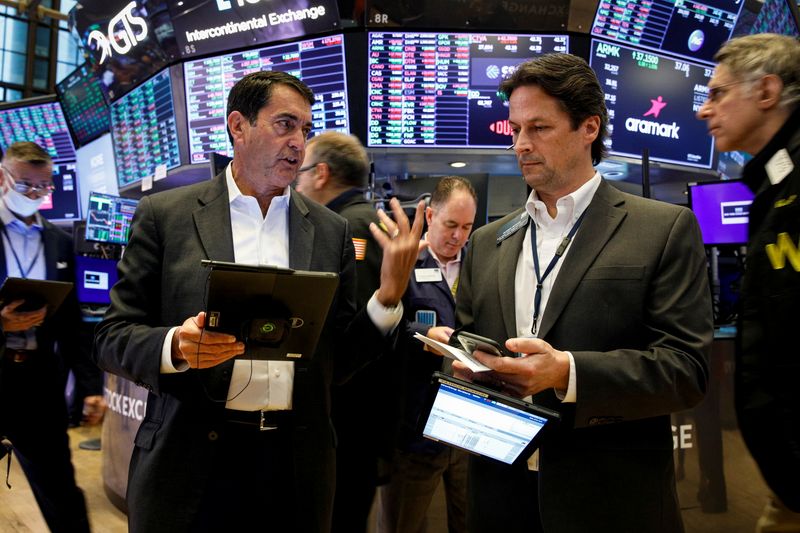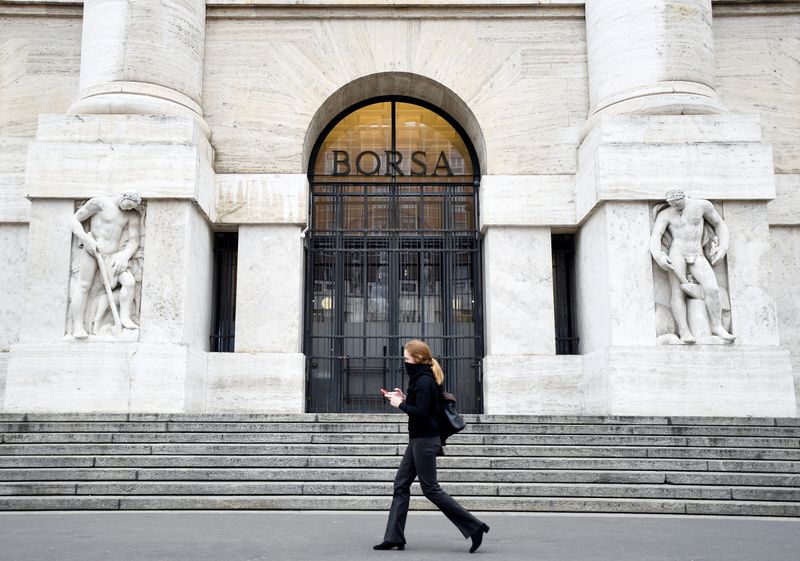NEW YORK (Reuters) – Global stock indexes mostly rose on Monday following gains in U.S. mega-cap technology and other growth names, while five-year Treasury yields rose to their highest levels since early 2020.
The dollar dipped after data showed production at U.S. factories fell by the most in seven months in September, erasing earlier gains.
MSCI’s gauge of stocks across the globe was also slightly higher, reversing earlier losses following data showing China’s gross domestic product grew 4.9% in the July-September quarter from a year earlier, its weakest pace since the third quarter of 2020.
On Wall Street, the S&P 500 and Nasdaq ended up while the Dow edged lower. Shares of Apple, Facebook and Microsoft were among the biggest boosts to the S&P 500.
Facebook shares, under pressure recently, rose sharply with some positive reports out, including its plans to create 10,000 jobs in Europe to help build the so-called metaverse – an online world.
Investors awaited more third-quarter results from U.S. companies this week after a mostly upbeat start to the earnings season last week.
“You’re going to get a heavier slate of earnings reports this week from a diverse set of industries,” said Michael James, managing director of equity trading at Wedbush Securities in Los Angeles, adding, “the path of least resistance remains higher going into earnings season for large-cap tech.”
China’s outlook as well as supply constraints related to the coronavirus pandemic have been issues for U.S. companies.
The Dow Jones Industrial Average fell 36.15 points, or 0.1%, to 35,258.61, the S&P 500 gained 15.09 points, or 0.34%, to 4,486.46 and the Nasdaq Composite added 124.47 points, or 0.84%, to 15,021.81.
The pan-European STOXX 600 index lost 0.50% and MSCI’s gauge of stocks across the globe gained 0.12%.
The dollar fell 0.02% to 93.95 against a basket of currencies. It had earlier reached 94.17 as U.S. Treasury yields increased.
Yields on five-year bonds rose as high as 1.193%, their highest since February 2020, extending a two-week rising streak.
Yields on 30-year U.S. bonds were only slightly higher, flattening the gap between five-year and 30-year debt US5US30=RR to its narrowest level since early 2020.
Some market watchers are forecasting the Federal Reserve will need to increase interest rates sooner than previously expected to quell rising price pressures.
They say the U.S. central bank will need to move as inflation looks unlikely to fade anytime soon.
Bitcoin last fell 0.15% to $61,448.06.
Oil prices eased after touching multi-year highs.
Brent crude oil futures were down 62 cents or 0.7% at $82.26 a barrel after hitting $86.04, their highest since October 2018.
U.S. West Texas Intermediate (WTI) crude were 12 cents higher, or 0.1%, at $82.40 a barrel, after hitting $83.87, their highest since October 2014.
U.S. gold futures gained 0.16% to $1,764.80 an ounce.
(Additional reporting by Danilo Masoni in Milan, Karen Brettell and Sinead Carew in New York and Ross Kerber in Boston; Editing by Steve Orlofsky and Richard Pullin)



























